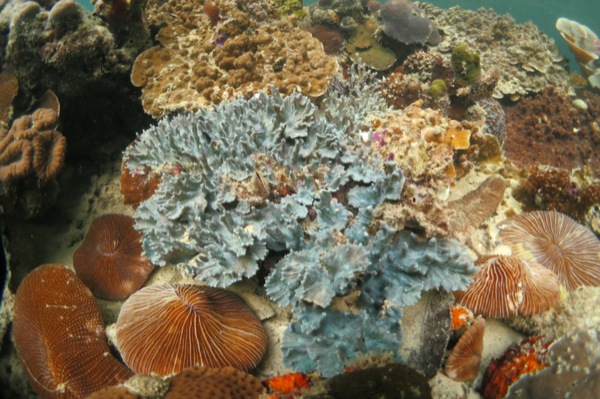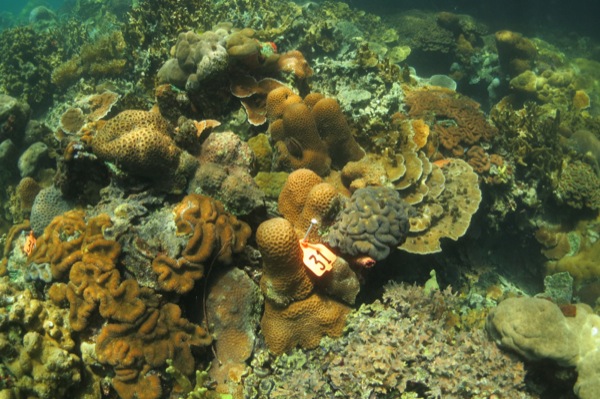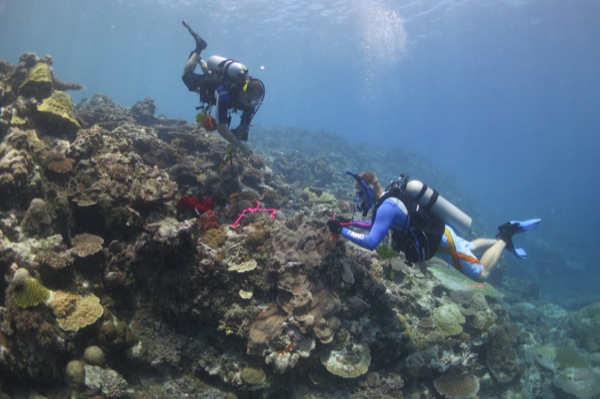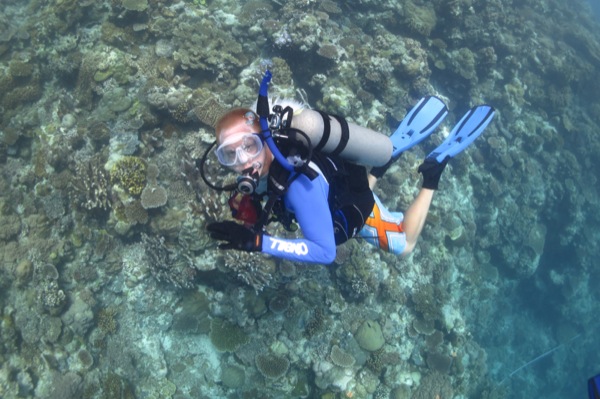

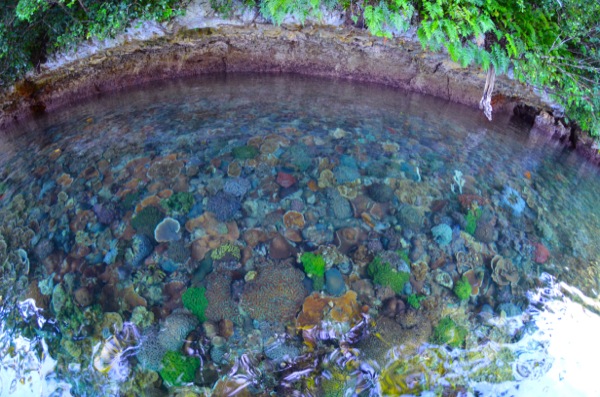
Coral reef health
UD researcher reports evidence that microbial algae found in Greater Caribbean originated from Indo-Pacific Ocean
3:13 p.m., June 1, 2015--The University of Delaware’s Daniel (Tye) Pettay reports new evidence that Symbiodinium trenchii (S. trenchii), a stress-tolerant zooxanthellae alga found in coral communities across the Greater Caribbean, is actually an introduced species from the Indio-Pacific Ocean.
The findings appeared in the June 1 online issue of the prestigious journal Proceedings of the National Academy of Science (PNAS) in an article titled “Microbial Invasion of the Caribbean by an Indo-Pacific Coral ‘Zooxanthella.’”
Research Stories
Chronic wounds
Prof. Heck's legacy
Coral reefs are an important ecosystem for marine plants and animals. More than 25 percent of marine species spend a portion of their life on a coral reef, despite the fact that coral reefs cover merely one-tenth of a percent of the world’s oceans.
Corals form symbiotic relationships with single-celled algae that live in their tissues. The coral provides the algae with a protected environment in which to grow and the compounds necessary for photosynthesis. In return, the algae provide organic nutrients necessary for the coral to survive, grow and produce calcium carbonate skeletons that form the structures of coral reefs.
Environmental stressors due to climate change, particularly rising seawater temperatures, can disrupt this symbiotic relationship, causing the coral to expel their algae and turn white. When this phenomenon — known as coral bleaching — occurs, the coral lose the valuable nutrients provided by their algae and begin to starve. If they remain bleached for prolonged periods of time, the coral will die.
As a result, researchers have focused on identifying stress tolerant algal symbionts that may allow reef coral to better cope with future temperature increases. S. trenchii is the predominant one in the Caribbean and was originally thought of as a “coral reef savior” because it made corals more thermally tolerant.
Pettay’s studies, however, reveal that while this microscopic algal species helps certain Caribbean corals tolerate elevated temperatures, it can cause previously unknown negative effects on coral health.
Pettay and his colleagues discovered that Caribbean coral colonies that associate with S. trenchii grew 50 percent more slowly than colonies that harbored native algal species.
“The real concern over slower growth is that reef formation may not keep pace with the natural destructive processes in the environment, and, in turn, could negatively impact the diverse marine species that rely on the habitat these reefs provide,” said Pettay, the paper's lead author and a postdoctoral researcher in the School of Marine Science and Policy, which is housed in UD’s College of Earth, Ocean, and Environment.
In addition to habitat loss, smaller reefs, or their complete loss, would diminish their role in coastal protection from storm surge and hurricanes in some areas, Pettay said.
It turns out that Caribbean S. trenchii not only impact growth, but that this population contains very little genetic diversity and is highly inbred.
In contrast, S. trenchii in the Indian and Pacific oceans contains more genetic diversity on a single reef, the size of a soccer or football field, than in the entire Caribbean Sea.
These findings, along with the fact that the Caribbean population is closely related to those in the Indo-Pacific, led the researchers to conclude that S. trenchii is not natural to the Caribbean, but recently introduced, potentially via the ballast water of cargo ships coming through the Panama Canal.
Taken together, these discoveries raise new questions about the stability and adaptability of Caribbean reefs in the future.
An uncertain future
However it arrived in the Caribbean, S. trenchii is there to stay and may be increasing in prevalence. Previous research by some of the coauthors show that S. trenchii exhibits opportunistic behavior and can out-compete other symbionts during times of stress – activities that may occur more frequently in the future.
During a bleaching event in the southern Caribbean in 2005, for example, the scientists witnessed S. trenchii moving into corals as seawater temperatures began to rise and coral bleaching occurred.
Many people are aware of the negative effects introduced plants and animals, such as zebra mussels, gypsy moths, kudzu or the seaweed Caulerpa, can impart on native ecosystems. However, single-celled microorganisms can have similar consequences, and the effects of S. trenchii on coral growth speak to this possibility.
For the past two years, Pettay, his co-authors and Mark Warner, professor in the School of Marine Science and Policy and Pettay’s postdoctoral adviser, have conducted temperature experiments on coral naturally associating with S. trenchii in Palau, in the Pacific Ocean. They are comparing these results to southern Caribbean coral, in Curaçao, where S. trenchii was introduced.
According to Pettay, only time will tell whether the introduction of S. trenchii in the Greater Caribbean will lead to major changes in coral reef functioning, and if the short-term benefit of stress tolerance will be negated by the long-term effects of reduced growth.
“The magnitude of these negative effects on Caribbean coral reefs is unknown at this time,” he said.
Contributing authors on the PNAS paper include Todd LaJeunesse, the project’s principal investigator and Pettay’s former adviser, and Drew Wham (Pennsylvania State University) and Robin Smith (Science Under Sail Institute for Exploration) and Roberto Iglesias-Prieto (University of Mexico).
The work is funded in part by the National Science Foundation, Canon Foundation (Japan), Pennsylvania State University, Florida International University and the PADI Foundation.
Article by Karen B. Roberts
Photos by Allison Lewis




